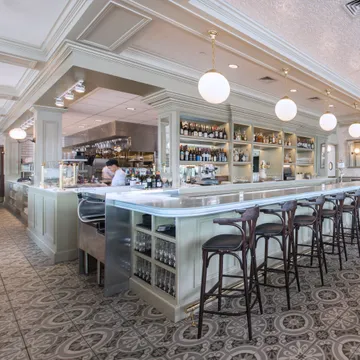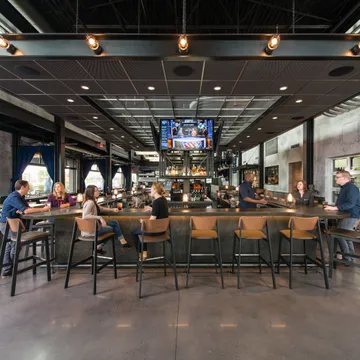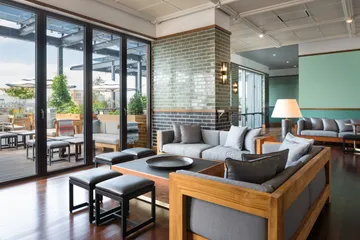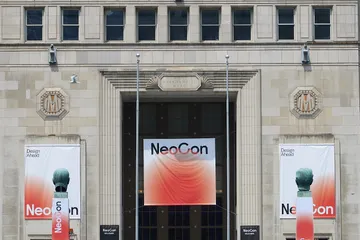Welcome to our Interview with An Expert Series, where we ask Kahler Slater’s Thought Leaders key questions about their industry. This episode features Amber MacCracken, Associate Principal, Designer sharing insights on the housing and hospitality markets.
Interview with an Expert: Amber MacCracken


1. How long has Kahler Slater been working in the hospitality market?
We’ve been in the hospitality market in different categories such as historic hotels for decades. We understand the complexities and challenges that come with a historic building, but we also love the opportunity to retell the stories of the building’s history and reimagine its potential for the future. We have had the pleasure of working on some amazing projects in our own backyard where we restored the building’s character and worked with a hotel flag to create a boutique version of their brand on the interior with signature elements of the past.
Front of house hospitality design is where our team gets to push the design limits and build a new experience as today’s top hotels are looking to connect with the guest, not only on expectations of service, but also by original designs that uniquely tell a story of the place and the brand.
More recently, in the last five years, we have amped up our portfolio for restaurants, as the market has been hyper focused on the food and beverage experience. We have built great relationships with local restauranteurs and breweries that are leading the way for Milwaukee’s dining and drinking experience.
2. What are some of the hospitality interior design trends you’re seeing?
- Strong emphasis on Food and Beverage within the hotel. The goal is to design the restaurant to feel and operate like an independent establishment. These spaces are attracting locals and great venues to pull in the local story and elevate the design.
- It’s all about the experience and that comes from the story. The design of the interior needs to resonate with the concept story and appeal to the experiential audience that is growing rapidly. We love connecting the design with the place and we like to pull in local; authentic art, artifacts and materials to reinforce the originality and resonate with the guest.
- Aesthetically, lighter, brighter and greener is the new direction. Our recent palettes are pulling in lighter tones and natural raw materials.
3. What’s the most interesting project you’re working on right now and why?
I’d have to say the Milwaukee Athletic Club due to its’ complexity. There is 100 years of history encapsulated in this building. The story and the design have changed over time and there are different spaces that reflect the time period that the building has seen in its lifetime. We are working to make our design concepts tie back to the history, stories and the club members’ memories.
It’s layered in constraints, from historic tax credits which require that we work with the National Park Service guidelines for restoration to design vintages spanning from 1917 to 1967. 50 years captures a wide range of time and interior style. We are working to restore the exterior of the building close to its 1917 character. The interior will be a combination of restoring special spaces back to their original grandeur, some original to the building in the teens and some part of a major renovation of the fifty’s era. Both are unique and special and can juxtapose the old with the new. For the athletic spaces, we can draw from our firm’s expertise in sport’s and rec environments and layer in hospitality design. We are combining a boutique look with modern technology. Some of the most special spaces, for example, the pool, will be restored back to the 1917 version and remind members and guests of the rich history the club has had over time. This exciting project will be completed and occupy in phases throughout 2020.
4. What are you seeing as the focus of full-service hotels?
- Personalized service and personality — people are looking to connect with a hotel brand and the city they are in.
- Table-side everything: custom signature cocktails or mocktails and amazing coffee
- Standout dining or a restaurant that can stand alone
- Wellness and an elevated sleep experience — having the ability to get in a workout is just as important as quality sleep. High acoustical separation rating is a given as well as outstanding bedding and linens.
- Bathrooms are a major focus in design with a quality shower and soaking tub
5. How has hospitality changed recently?
A recent trend that we are seeing in the hotel and restaurant market is shared efficiency with back of house functions. We designed one building at the Mayfair Collection with three independently facing restaurants with one large shared kitchen. Each concept looks standalone from the outside with its own identity and offering, but then benefits from shared loading, storage, dishwashing, etc. This idea is also seen in the hotel industry with dual branded hotels sharing back of house functions for efficiency. The guest can select from two different brands and experiences and the operator gains as well.



An intriguing major recent development or disruptor to the hospitality market is Domio, a new company that offers a hybrid of apartment plus hotel experience. Domio appeals to group travel that only previously could be accommodated by Airbnb but offers a high-end hotel experience by building out thoughtfully styled interiors.



